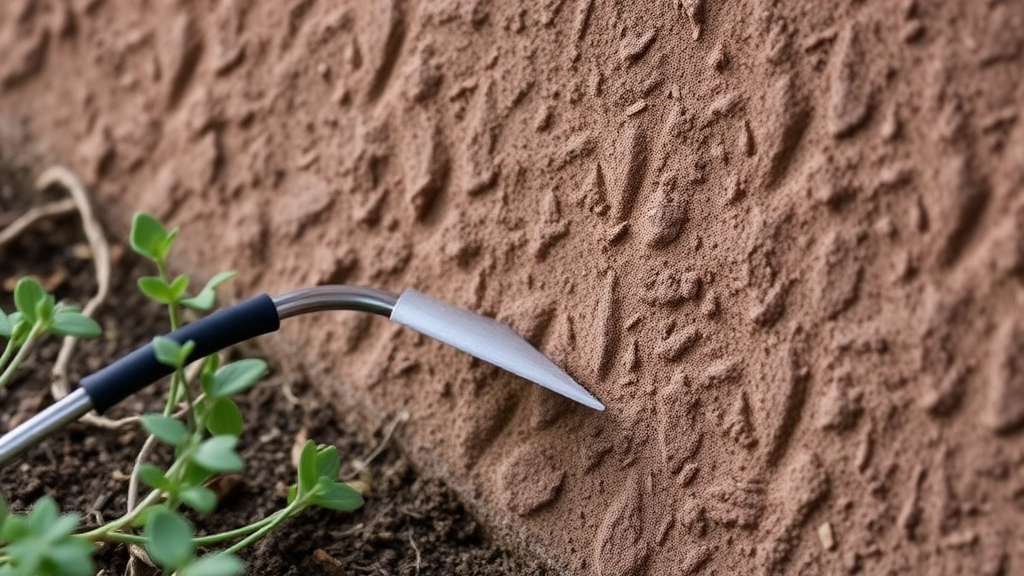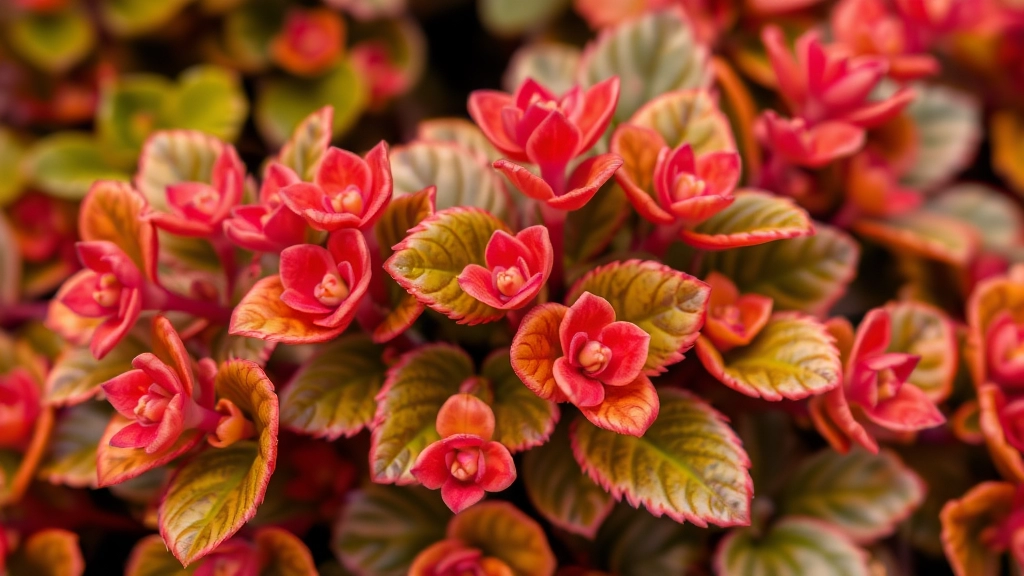Kalanchoe Care: Troubleshooting Brown Leaves
Ever noticed your Kalanchoe leaves turning brown and wondered what went wrong? You’re not alone. Many plant enthusiasts face this issue, and it’s usually a sign that something in the care routine needs tweaking. Let’s dive into the common causes and how you can fix them to keep your Kalanchoe thriving.
Common Causes of Browning Leaves
First, check your watering habits. Overwatering is a common culprit that leads to root rot and browning leaves. Make sure the soil is well-draining and that you’re allowing it to dry out between waterings.
Lighting Conditions
Also, consider the lighting conditions. Kalanchoes need bright, indirect light, so if they’re getting too much direct sunlight, the leaves could scorch and turn brown.
Common Causes of Kalanchoe Leaves Turning Brown
If you’ve noticed your Kalanchoe leaves turning brown, you’re not alone. This is a common concern among plant enthusiasts. Understanding the reasons behind this issue can help you get your plant back on track.
Overwatering
One of the primary culprits is overwatering. Kalanchoes are succulents and thrive in drier conditions. When the soil remains soggy, it can lead to root rot, causing the leaves to brown and eventually drop off.
- Signs of Overwatering:
- Soft, mushy leaves
- Yellowing before browning
- Roots that appear black or slimy
Underwatering
Conversely, underwatering can also lead to brown leaves. If your Kalanchoe is not receiving enough moisture, it will start to show stress.
- Signs of Underwatering:
- Crispy, shriveled leaves
- Dry, cracked soil
- Leaf drop
Nutrient Deficiency
Another factor to consider is nutrient deficiency. Kalanchoes require a balanced fertiliser to thrive. A lack of essential nutrients can manifest as brown spots or edges on the leaves.
- Common Nutrient Deficiencies:
- Nitrogen: Causes overall yellowing and browning of older leaves.
- Potassium: Leads to browning at the leaf tips.
Environmental Stress
Changes in your plant’s environment can also lead to browning leaves. Kalanchoes prefer stable conditions. Sudden temperature fluctuations, drafts, or exposure to direct sunlight can stress the plant.
- Environmental Stress Indicators:
- Leaves turning brown at the tips
- Leaf drop or wilting
Pest Infestation
Lastly, pest infestations can cause significant damage. Common pests like mealybugs or spider mites can sap the plant’s vitality, leading to browning leaves.
- Signs of Pests:
- Webbing on the plant
- Sticky residue on leaves
- Visible insects
For more detailed guidance on caring for your Kalanchoe, you can refer to our comprehensive Kalanchoe plant care guide. Additionally, if you are dealing with specific issues like pests, our article on how to treat Kalanchoe black spots can provide effective solutions.
Identifying Different Types of Brown Spots

Have you noticed brown spots on your Kalanchoe and wondered what they mean? You’re not alone! Many plant lovers face this issue, and it can be a bit confusing.
Let’s break it down.
1. Leaf Spot Disease
These spots often appear as dark brown or black patches with a yellow halo around them. This can mean your plant is suffering from a fungal infection.
- What to look for: Irregular shapes, often spreading quickly.
- Solution: Remove affected leaves and improve air circulation.
2. Sunburn
If your Kalanchoe is getting too much direct sunlight, you might see crispy, brown patches on the leaves.
- What to look for: Brown, dry spots, usually on the side facing the sun.
- Solution: Move your plant to a spot with filtered light.
3. Overwatering
Brown spots can also be a sign of overwatering. The leaves may feel mushy or soft.
- What to look for: Dark brown spots, often accompanied by wilting.
- Solution: Let the soil dry out completely before watering again.
4. Nutrient Deficiency
Lack of essential nutrients can lead to brown tips or spots on the leaves.
- What to look for: Brown edges or tips, often starting from the bottom leaves.
- Solution: Use a balanced fertilizer every few weeks during the growing season.
5. Pest Damage
Sometimes, pests like spider mites or mealybugs can cause brown spots.
- What to look for: Tiny webs or cottony masses on the leaves.
- Solution: Treat with insecticidal soap or neem oil.
Proper Watering Techniques for Kalanchoe
Have you ever wondered why your Kalanchoe leaves are turning brown? One of the most common culprits is improper watering. Understanding how to water your Kalanchoe correctly can make all the difference in keeping it healthy and vibrant.
Key Watering Techniques:
- Check the Soil Moisture: Always check the top inch of soil. If it feels dry, it’s time to water.
- Water Thoroughly: When you water, ensure that the water reaches the root zone. This encourages deep root growth.
- Avoid Overwatering: Kalanchoe is susceptible to root rot. If the soil remains soggy, the roots can suffocate.
- Use Well-Draining Soil: A mix designed for succulents allows excess water to drain away quickly, preventing waterlogging.
- Consider the Season: During the growing season (spring and summer), water more frequently. In winter, reduce the frequency as the plant enters dormancy.
For instance, I once had a Kalanchoe that suffered from overwatering. The leaves turned brown and mushy. Once I adjusted my watering habits, it bounced back beautifully. If you’re dealing with similar issues, you might find our guide on why Kalanchoe leaves turn soft helpful. Additionally, understanding the complete care for pink Kalanchoe plants can provide more insights into maintaining healthy plants.
Effective Pest Control Measures

Are you noticing tiny bugs on your Kalanchoe?
Pests can be a significant concern for plant lovers, and Kalanchoe is no exception.
Identifying and controlling these pests is crucial to keeping your plant healthy.
Common Pests Affecting Kalanchoe:
- Mealybugs: These white, cotton-like pests often hide in leaf axils.
- Aphids: Small and green, they tend to cluster on new growth.
- Spider Mites: Tiny and often invisible, they can cause webbing and leaf discoloration.
Effective Control Strategies:
- Regular Inspection:
- Check your Kalanchoe weekly for any signs of pests.
- Early detection can prevent a larger infestation.
- Natural Remedies:
- Neem Oil: A natural pesticide that disrupts pest life cycles.
- Insecticidal Soap: Effective against soft-bodied insects like aphids and mealybugs.
- Manual Removal:
- For small infestations, wipe pests off with a damp cloth or use a soft brush.
- This method is particularly effective for mealybugs.
- Maintain Cleanliness:
- Keep the surrounding area tidy to reduce pest habitats.
- Remove dead leaves and debris that may attract pests.
- Quarantine New Plants:
- Always isolate new plants for a few weeks before introducing them to your collection.
- This helps prevent any pests from spreading.
To enhance the health and vitality of your Kalanchoe, it’s essential to understand the specific care requirements for different species. For example, the **Kalanchoe Tomentosa** thrives in bright, indirect sunlight and prefers warm temperatures. If you’re looking for more detailed information, check out our [Kalanchoe Tomentosa care tips and growing guide](https://planthq.org/succulent-kalanchoe-tomentosa-care-tips-and-growing-guide/).
Additionally, managing temperature fluctuations is crucial. For a comprehensive understanding of how to maintain optimal conditions for your plant, our [ultimate guide to flowering Kalanchoe care](https://planthq.org/ultimate-guide-to-flowering-kalanchoe-care-tips-for-blooming/) provides expert tips on ensuring your Kalanchoe blooms beautifully.
Preventative Care and Maintenance Tips
Are your Kalanchoe leaves looking a bit worse for wear? You’re not alone. Many plant lovers face the challenge of keeping these beauties healthy and vibrant. But don’t worry! With a little preventative care and maintenance, you can keep your Kalanchoe thriving.
FAQs on Kalanchoe Leaves Turning Brown
What are the common causes of brown spots on Kalanchoe leaves?
Brown spots on Kalanchoe leaves can be caused by several factors, including leaf spot disease, sunburn, overwatering, nutrient deficiency, and pest damage.
How can I identify leaf spot disease on my Kalanchoe?
Leaf spot disease presents as dark brown or black patches with a yellow halo around them. These spots are irregular in shape and often spread quickly.
What should I do if my Kalanchoe has sunburn?
If your Kalanchoe has sunburn, you will notice crispy, brown patches on the leaves, usually on the side facing the sun. Move your plant to a spot with filtered light to prevent further damage.
How do I know if my Kalanchoe is overwatered?
Overwatered Kalanchoe leaves may develop dark brown spots and feel mushy or soft. Allow the soil to dry out completely before watering again to address this issue.
What are the signs of nutrient deficiency in Kalanchoe leaves?
Nutrient deficiency often manifests as brown edges or tips on the leaves, starting from the bottom. Using a balanced fertilizer every few weeks during the growing season can help remedy this.
How can I control pests on my Kalanchoe?
Effective pest control strategies include regular inspection, using natural remedies like neem oil and insecticidal soap, manual removal of pests, maintaining cleanliness, and quarantining new plants before introducing them to your collection.
What pests commonly affect Kalanchoe plants?
Common pests that affect Kalanchoe include mealybugs, aphids, and spider mites. Mealybugs appear as white, cotton-like masses, aphids are small and green, and spider mites may cause webbing and leaf discoloration.
Why is regular inspection important for pest control?
Regular inspection helps in early detection of pests, which can prevent a larger infestation. Checking your Kalanchoe weekly for any signs of pests is recommended.
What natural remedies can I use to control pests on my Kalanchoe?
Natural remedies like neem oil and insecticidal soap are effective against pests. Neem oil disrupts pest life cycles, while insecticidal soap is effective against soft-bodied insects like aphids and mealybugs.
How can I manually remove pests from my Kalanchoe?
For small infestations, you can wipe pests off with a damp cloth or use a soft brush. This method is particularly effective for removing mealybugs.
Why is it important to maintain cleanliness around my Kalanchoe plants?
Maintaining cleanliness helps reduce pest habitats. Keep the surrounding area tidy and remove dead leaves and debris that may attract pests.
How should I quarantine new plants to prevent pest infestations?
Always isolate new plants for a few weeks before introducing them to your collection. This helps prevent any pests from spreading to your existing plants.
References
-
Understanding Brown Spots on Kalanchoe Plants
-
Common Pests and Diseases of Kalanchoe
-
Kalanchoe Plant Care Guide
